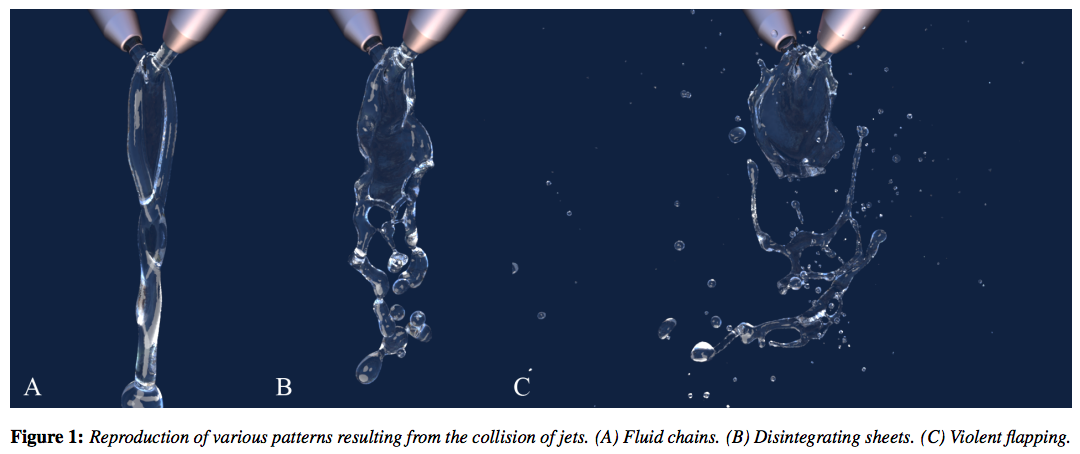Surface Only Fluid Drop Modeling
10.11.18
While going through videos on YouTube.com I came across a computational modeling video of fluids. I worked on computational modeling of molecules but was very unfamiliar to how this worked with larger scale systems. I watched this video and was amazed that it was completely computer animated. I was even more surprised when I went to look up how it was done and two (not one, but two!) Columbia professors were part of the project, Prof. Fang Da, and Prof. Eitan Grinspun. They saw that they "propose a novel surface-only technique for simulation incompressible...liquids...The liquid surface is captured by a triangle mesh on which a Lagrangian velocity field is stored." Using this they can model various things including waterbells (seen in chocolate fountains), fluid chains, and crown splashes.
The attention to detail first and formost int he physics is honestly mind-blowing. The frame-rate (or rate of calculating positions) is incredibly high, and lends it self well to slow motion in 360° frames. In the jet collision example the detail to surface texture is also demonstrated through lighting, shadows, and refraction. This seems to be very interesting from a research standpoint, if they model known liquids within this triangle based framework could they then model highly toxic, or hard to come by liquids in order to reduce cost? I'm thinking about the end goal here and is this a verification project (verification or certain equations), or a project completely centered towards computer graphics to be used within games or virtual reality cells. In looking with their earlier videos the this current video looks way more realistic. The other ones border on the uncanny valley in comparison, if not just for their use of generic backgrounds. This video stands confidently in not trying to convince the viewer that what is being presented is real through liquids reflecting backgrounds, but through the shear smoothness that the surface-level fluids move.
Their reasoning for surface leve modeling also states, "populating the entire volume of the liquid is clearly uneconomical, and as we will demonstrate, it is also unnecessary for many phenomena of interest". This negation of calculations within the volume increase the opportunity to refine surface level calculations, which help enhance the optics, the only part that the viewer sees anyway. Overall I find this to be a very new and exciting way to go about modeling, with my only experience directly manipulating anything to be through sandbox games, where everything, includes fluids are tiny spherical particles. With the rise of computer graphics I'm excited to see where we'll be in five, ten, or even fifteen years.
All photos taken from this paper
